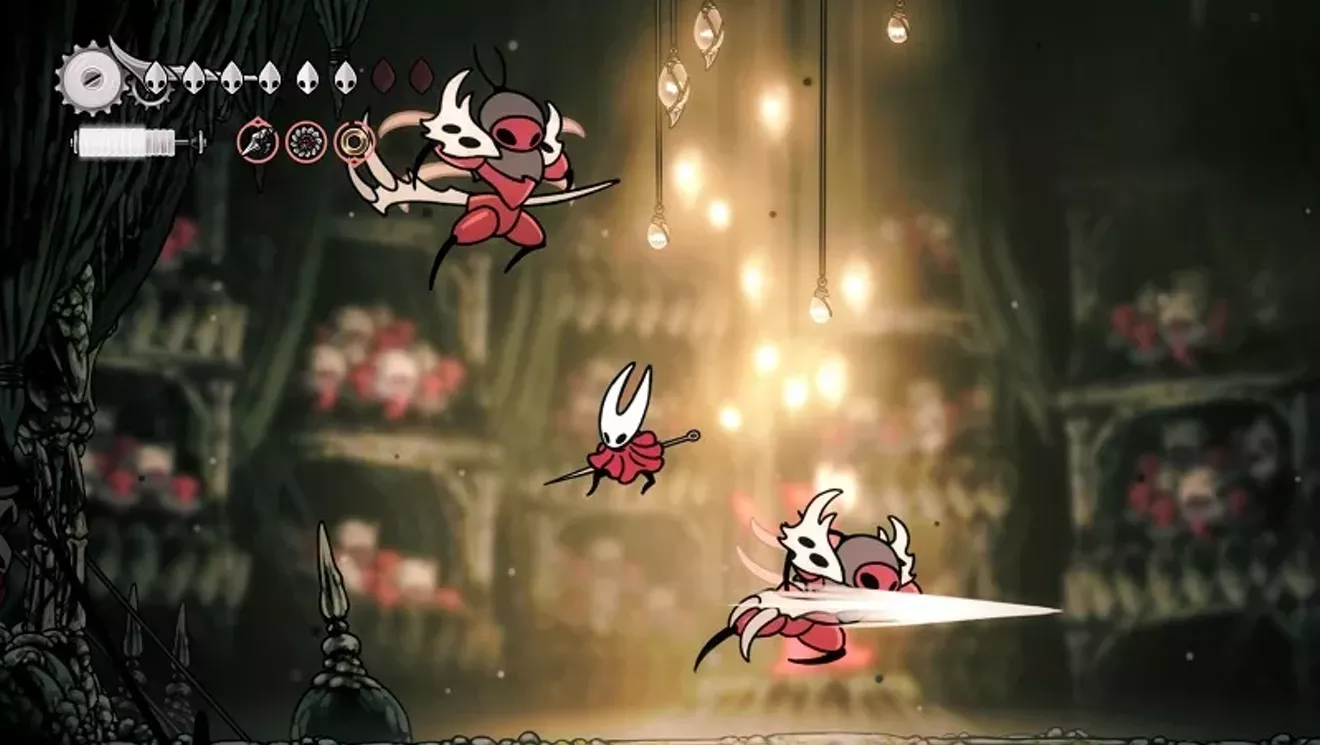Is Hollow Knight: Silksong’s Difficulty Secretly Brilliant?

Contains spoilers for Hollow Knight: Silksong
Hollow Knight: Silksong is damn hard. I know that when I reviewed it, I said that it wasn’t actually more difficult than the first Hollow Knight, but those were the words of someone that hadn’t been to Bilewater or tried the High Halls gauntlet yet.
Judging by posts on YouTube and Reddit, as well as my own playing, the difficulty spike comes from two areas. One, the runback for bosses can be a nightmare. Silksong has several long stretches between save benches and bosses where getting a second try at defeating them involves hard platforming and annoying enemy placement. I lost count of the times another attempt at a boss miscarried on the way.
Two, the number of regular enemy gauntlets. Some of these are bosses in and of themselves, such as the High Halls, and some are part of a real boss fight, such as the three Heart bosses in Act 3. That’s where I’m stuck right now, grimly carving my way through Skarrsinger Karmelita by inches after at least 20 tries.
Both of these irritations involve the same thing: regular enemies you have to cut your way through to fight the boss each time. There’s little opportunity to concentrate on the muscle memory of a one-on-one dance with a single opponent, arguably the mechanical aspect of the Hollow Knight series that is most rewarding. At its best, Hollow Knight is like Cuphead, a series of fighting game scenarios framed as a side-scroller. The mobs muck that up by making you refocus on several individuals rather than one boss.
I think that’s the point, though. The story of Silksong is about how a mad god keeps a population in thrall to serve her own ends. The hero, Hornet, is constantly running into other bugs that have been turned into crazed attackers. Some of these are even former friends she meets along the way. In Bellhart, Hornet finds an entire town bound in spider silk, caught in worshipful slavery until she cuts the strings.
Hollow Knight had a similar theme with the Radiance’s infection, but that was more uncontrolled and wild. The work of the main boss in Silksong, Grand Mother Silk, is deliberate and calculating. We see numerous reminders of her terrible authoritarianism. Guards in the Slab prison are born in servitude; workers in the Underworks have to pay to sit down or to receive religious penance; and a room near the end chronicles Grand Mother Silk’s ruthless pursuit of spider children like Hornet, callously spending the lives of follower as long as she gets what she wants.
Contrast this with Hornet. Having watched Hallownest fall to the infection in the first game, she is keen to avoid another collapse in Pharloom. At every turn, she tries to free the bugs of Pharloom from Grand Mother Silk, often without considering the consequences. When her actions lead to the destruction of Pharloom and the invasion of the void in Act 3, she is emotionally devastated. Everyone around her is dead, consumed by the void, or hopelessly preparing for the end of the world. Desperately, Hornet pledges to fix things.
This is where the narrative brilliance of the difficulty shines. Regular bugs matter. The rot in Pharloom is not just the work of a few bad apples under a mad god. This is a community full of connections intertwined in a web. When Hornet is forced through long runbacks full of Pharloom’s inhabitants or caught killing pawns in a fight with a boss, it reminds us that everything in the game affects the bugs living there.
Is it mechanically enraging? Absolutely. Developer Team Cherry could have made this point with fewer regular enemies or easier platforming challenges, but the mobs and runbacks should still absolutely be there. They remind the player and Hornet that there are lives at stake in this fight. This is a kingdom, not an empty space full of mindless obstacles to stab.
Evil never happens in a vacuum. It is enabled through the petty cooperation of millions of participants. Battles to destroy great evil result in collateral damage to the innocent in 100 percent of cases. By filling these game milestones with the common bugs of Pharloom, Silksong keeps this theme front and center where it cannot be ignored. There is literally no moving forward without confronting it.
I agree with everyone cursing the difficulty of this game. There were near wins that left me shaking with rage. However, if the last decade has taught us anything, it’s that confronting authoritarianism is going to be very hard and full of casualties. You’ll constantly be running into the haunted servants of the powerful, some of whom you once trusted, and you will have to find a way through them to get to the heart of darkness. Doing so is traumatizing.
Often, I found myself yelling at these random Silksong mobs that made beating the boss harder. “Why are you even here? I’ve got no beef with you!” I could be using those same words every time some random Nazis yells at me in real life. Silksong has a lesson to teach us about the human cost of authoritarianism, and the runbacks and gauntlets are a part of that. Why wouldn’t they be frustrating?
Hollow Knight: Silksong is available on Steam, Nintendo Switch, Playstation 4/5, and X Box Series X/S. $19.99.

Reign Bowers is an outdoor enthusiast, adventure seeker, and storyteller passionate about exploring nature’s wonders. As the creator of SuperheroineLinks.com, Reign shares inspiring stories, practical tips, and expert insights to empower others—especially women—to embrace the great outdoors with confidence.




Post Comment